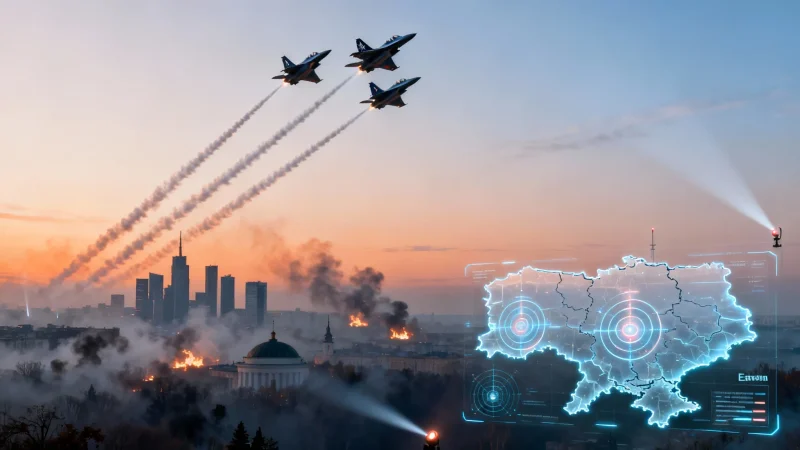
A Night of Drone Swarms and Scrambled Alarms
Poland’s air force went into full combat readiness in the early hours of Saturday after Russia launched a sweeping overnight assault on Ukraine. The attack, one of the most extensive in months, included nearly 600 drones, 40 missiles, and multiple ballistic strikes, according to Ukrainian officials. Explosions lit up cities across Ukraine’s east and center, while air raid sirens wailed for more than 11 hours in some regions.
Polish and allied NATO aircraft were scrambled into the skies near Ukraine’s western border. The move came not just out of precaution, but as a warning—any Russian drones or missiles spilling into NATO-controlled skies would face immediate retaliation. The Polish Operational Command posted that its “duty fighter pairs” and ground-based defenses were on maximum alert.
Zelensky: “Terror, Not Military Necessity”
Ukrainian President Volodymyr Zelensky confirmed at least three deaths and dozens injured in the strikes, including civilians hit by a cluster munition in Dnipro. He accused Moscow of waging a campaign built not on military necessity but on “terrorizing civilians and destroying infrastructure.”
Crucially, Zelensky signaled that next week’s meetings in New York with U.S. President Donald Trump will be a litmus test for whether Ukraine can secure longer-term guarantees from Western powers—or if sanctions remain the blunt instrument for punishing Moscow.
Caught Between Borders: Poland, NATO, and Escalation Risks
The strikes edged dangerously close to NATO territory. Poland’s scramble follows a string of Russian airspace violations in recent weeks, including drones crashing into Polish farmland and a dramatic incident in which NATO fighters shot down multiple intruders—marking the first time the alliance had fired weapons in anger since Russia’s 2022 invasion.
The assault also came less than a day after Russia’s MiG-31 jets violated Estonian airspace for 12 minutes, prompting Tallinn to request NATO Article 4 consultations, a diplomatic tool often preceding collective military measures. Moscow denied the incursion and labeled it a “routine flight,” though European officials dismissed the explanation as brazen provocation.
Cyber Shadows in the Background
As if the aerial escalation weren’t enough, Europe’s vulnerability to hybrid warfare surfaced the same day. A cyber-attack targeting aviation software disrupted flights across Heathrow, Brussels, and Berlin. While not directly tied to Moscow, the timing underscored how kinetic and cyber offensives often overlap in Russia’s doctrine of pressure.
What This Means for NATO’s Eastern Flank
For Poland, Saturday marked both a routine drill in military discipline and a sobering test of collective defense. The quick decision to scramble jets carried symbolic weight: NATO won’t wait for a missile to cross its border before acting.
Yet, the attack also exposes NATO’s hesitation—Western leaders repeatedly reject Ukrainian pleas for a protective air umbrella directly over Ukraine, wary of sparking open war with Russia. For now, Kyiv fights skies flooded with drones largely alone, while neighbors like Poland prepare for spillover.
As Zelensky prepares for his high-stakes UN week, the message from this weekend is sharp: Ukraine can deflect but cannot deter without deeper Western involvement. And every drone that veers toward NATO’s territory chips away at the boundary between localized war and broader conflict.
